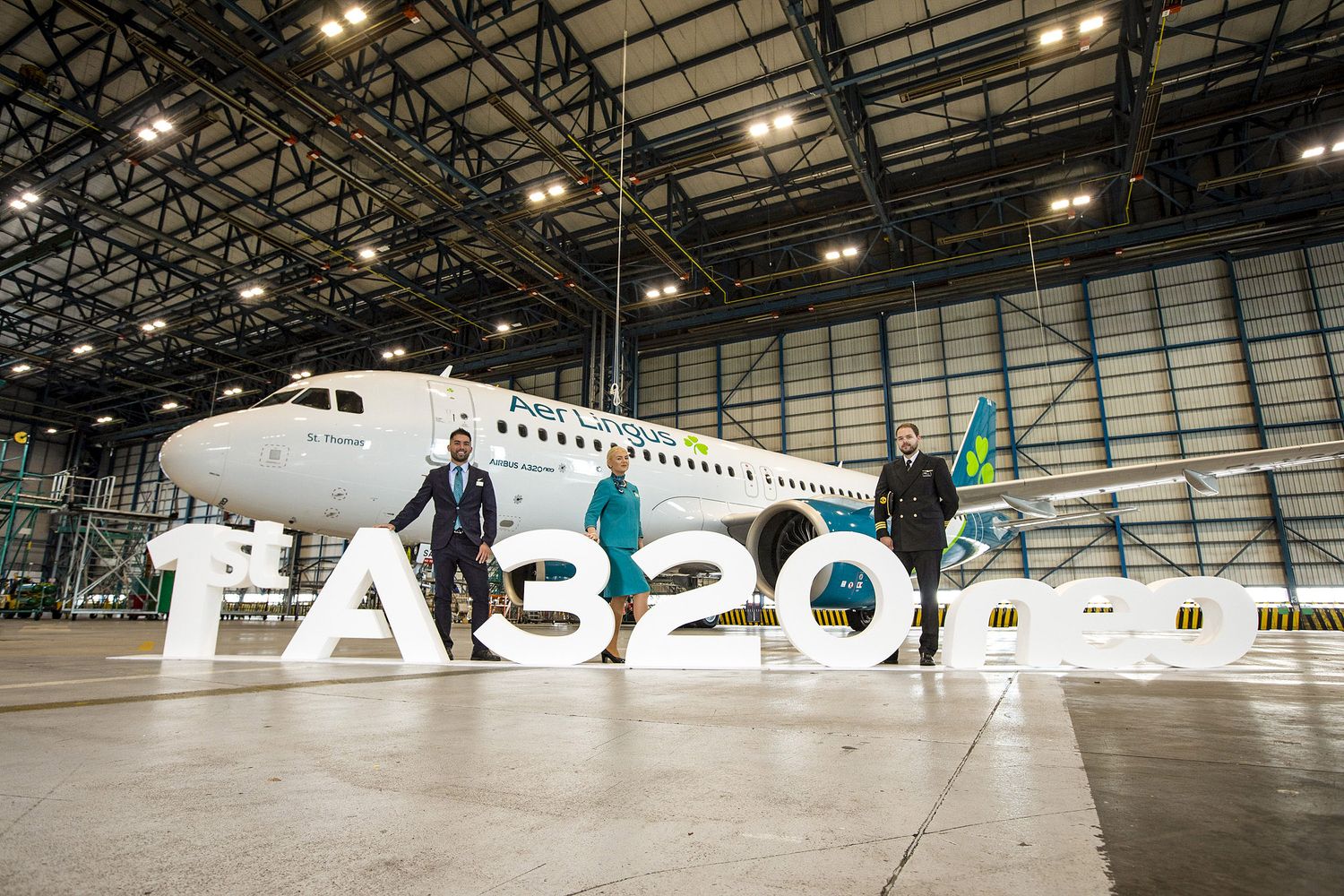Leaving the pandemic behind, the market for next-generation jets is as hot as ever. And when sanctions affected leasing to Russian airlines, opportunities arose for other airlines to snatch some last-minute deals on orders that, otherwise, would take years to materialise.
It was the case of Aer Lingus; the flag carrier of the Republic of Ireland confirmed, in June, that it would lease two Airbus A320neo — the first and so far the only of the type in its fleet.
Having received it some months later, revenue operations started on September the 28th with EI-NSA, named «St.Thomas»/»Tomás»; and EI-NSB, named «St. Aidan»/»Aodhan» followed less than a week after.
After ten days and 96 flights, this is the network that the pair of new jets has operated:

Yes, they have been fixed in the Dublin-London/Heathrow connection, Aer Lingus’ most important route.
But why? After all, IAG (the parent company of Aer Lingus) has a commanding lead between the two airports — between the Irish carrier and British Airways, it has a monopoly. Wouldn’t this new asset, with a lower fuel burn, be better deployed in routes where Aer Lingus faces stiff competition?
The answer lies behind a single factor: airport fees.
Heathrow Airport is in a privileged position; it is so requested by airlines that it has a perfect combination of very high charges and an incredibly constrained slot structure.
Effectively, this means that it can opt to charging systems that would not work elsewhere — mostly, because airlines would be scared off. It’s the case of their noise charges.
According to the airport’s management, for 2022, 39% of their direct revenue from operations derives from their «movement» charges — while 57% come from the «departing passenger» and 4% from parking.
Breaking down the 39% from movement, Heathrow charges the same price per arrival and departure; and each aircraft, following a noise category, is required to pay accordingly.

A 2018 study commissioned by Irish lessor FPG Amentum and authored by Ana Magdalina and Rory Hensey explores exactly that.
According to the authors, the CFM-powered, old-generation Airbus A320 — the variant that is operated by Aer Lingus — would place the aircraft, under Heathrow’s 2022 rules, on «Chapter 14 High», thus, costing the airline, for each movement, £1853.08 (GBP1=USD1.11 as of October the 10th, 2022).
Thus, for one departure (and if all 172 seats sold were occupied), each passenger would pay £10.77; and that is not considering the «departing passenger» charges that the airline is liable for.
With the Airbus A320neo, though, the game changes. The CFM-powered aircraft is quiet enough that it is deemed a «Chapter 14 Super-Low» aircraft. Aer Lingus would have to pay, in a single departure, £557.56, or, if the 184 seats are sold, £3.03 per passenger.
It means an economy of £1295.52 per departure (and arrival) from and to Heathrow Airport. With this, even though Aer Lingus might be paying a high lease price for the aircraft, they may be very well worth it, if they help keeping the old A320s out of Heathrow.
Thus, in the 96 flights that have already been operated — and, for the sake of simplicity, considering that the Airbus A320neos replaced only A320ceos, not A321neos — that meant an economy of over £124,000 in just about two weeks.
With this, Aer Lingus can keep its advantage on the Dublin-London market, which is its largest by number of seats.
On an email to Aviacionline, Aer Lingus subtly confirmed that is the reason why the A320neos are fixed in that specific route. «The new generation Airbus A320neo aircraft are up to 20% more efficient for fuel and CO2 emissions and up to 50% quieter compared to older generation aircraft», said the airline, «incurring lower landing charges in key airports, like London Heathrow.»


Comentarios
Para comentar, debés estar registrado
Por favor, iniciá sesión